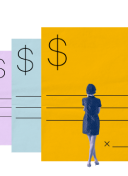Car loans
We suggest offers based on your credit profile, Approval Odds and money we make from our partners. Compare new and used cars and loans within minutes. Just enter a few details to see custom options.
Get a car from Carvana
Skip the hassle of a dealer and get a high-quality pre-owned car delivered right to your door.
$20,000
Loan Amount
Monthly Payment*
$417.01
Term
60 months
APR* as low as
9.19%
Offer Details
- Shop all vehicles with your real monthly payment and interest rate.
- Choose to have it delivered to your door as-soon-as tomorrow or pick it up at a Carvana Vending Machine.
- Every car comes with a 7-day money back guarantee and a 100 day / 4,189 mile limited warranty. All vehicles are Carvana Certified and have no reported accidents with a 150pt inspection.
- Sell your current car to Carvana with a firm offer in as little as 2 minutes and add it to your purchase as a trade-in.

Why Carvana?
Here are a few other reasons you should consider them:
- Find a car that fits your budget with real, personalized finance terms.
- Adding a co-signer can get you more attractive finance terms, like lower interest rates, down payments, and monthly payments.
- Experience a hassle-free buying process, with no hidden fees or surprises.
- Get your vehicle delivered or pick it up at one of our Car Vending Machines!
- Get 7 days to love your ride, or return it.
Other options
Offer Details
- Get access to over 600,000 used vehicles for sale nationwide*
- Browse pre-owned vehicles and see price ratings based on similar used car listings in your area
- Get a free condition summary for the used car you want so there are no surprises
- Have a car to sell or trade in? See the value of your current car and get a cash offer in minutes
